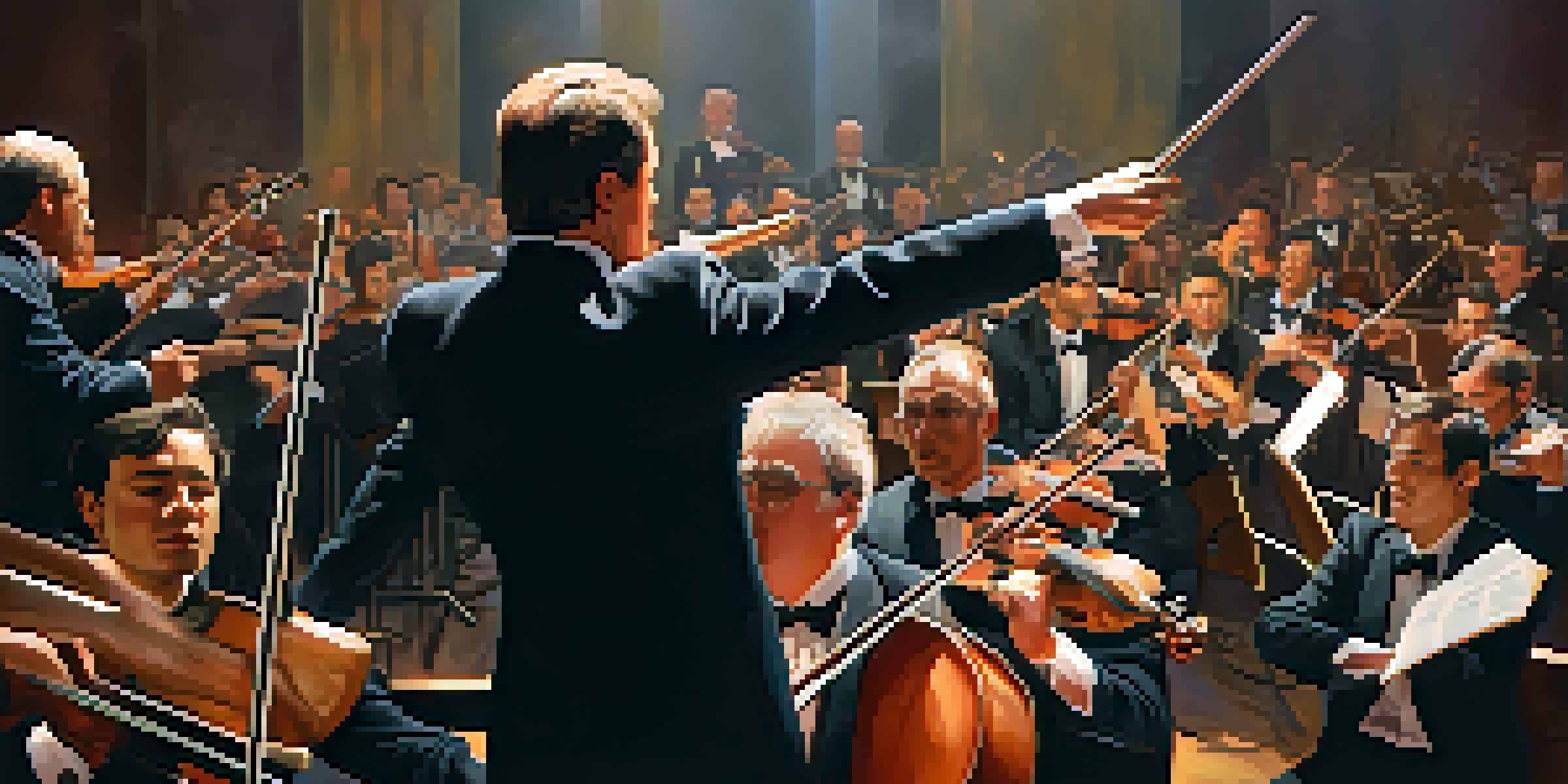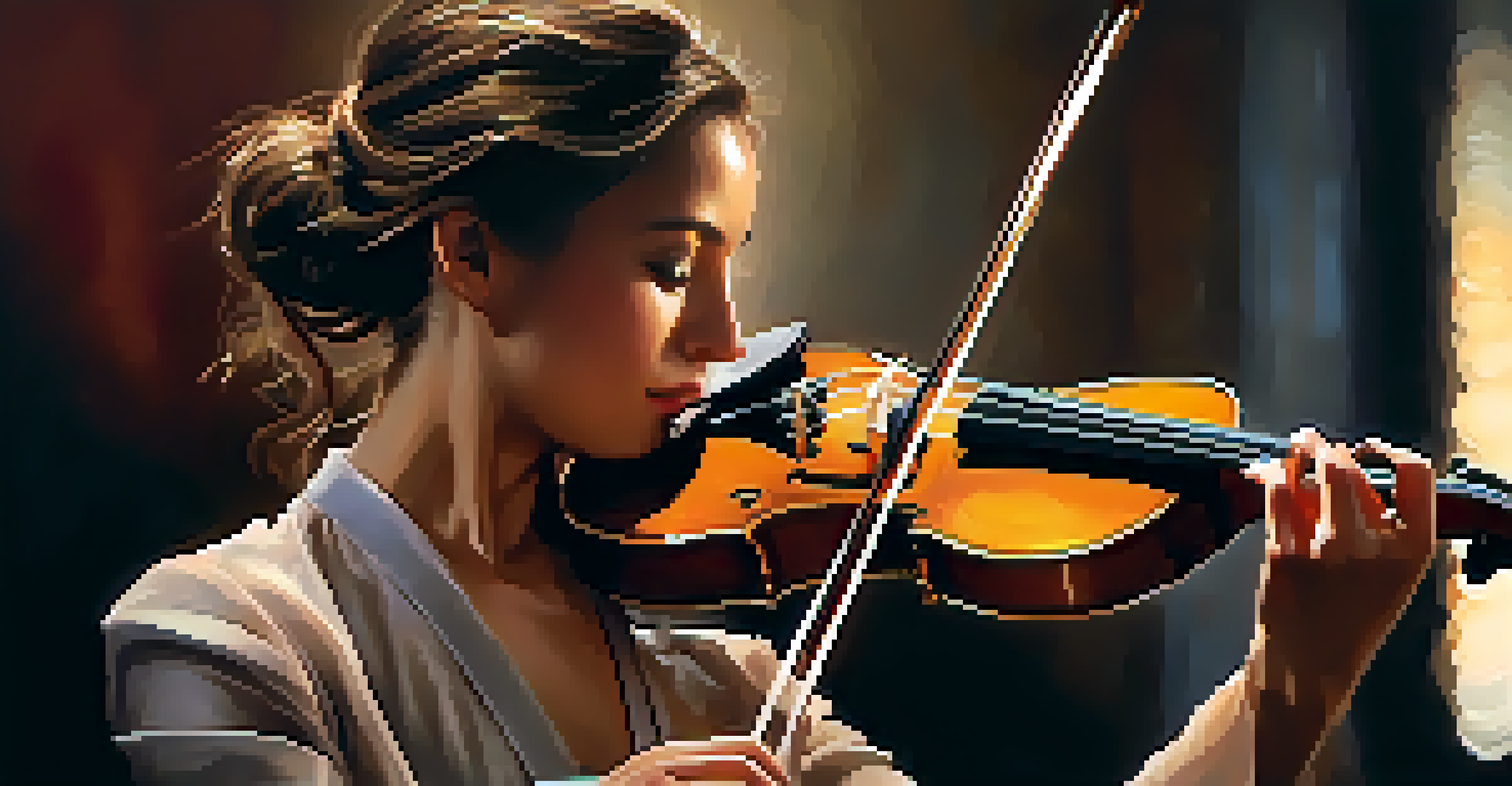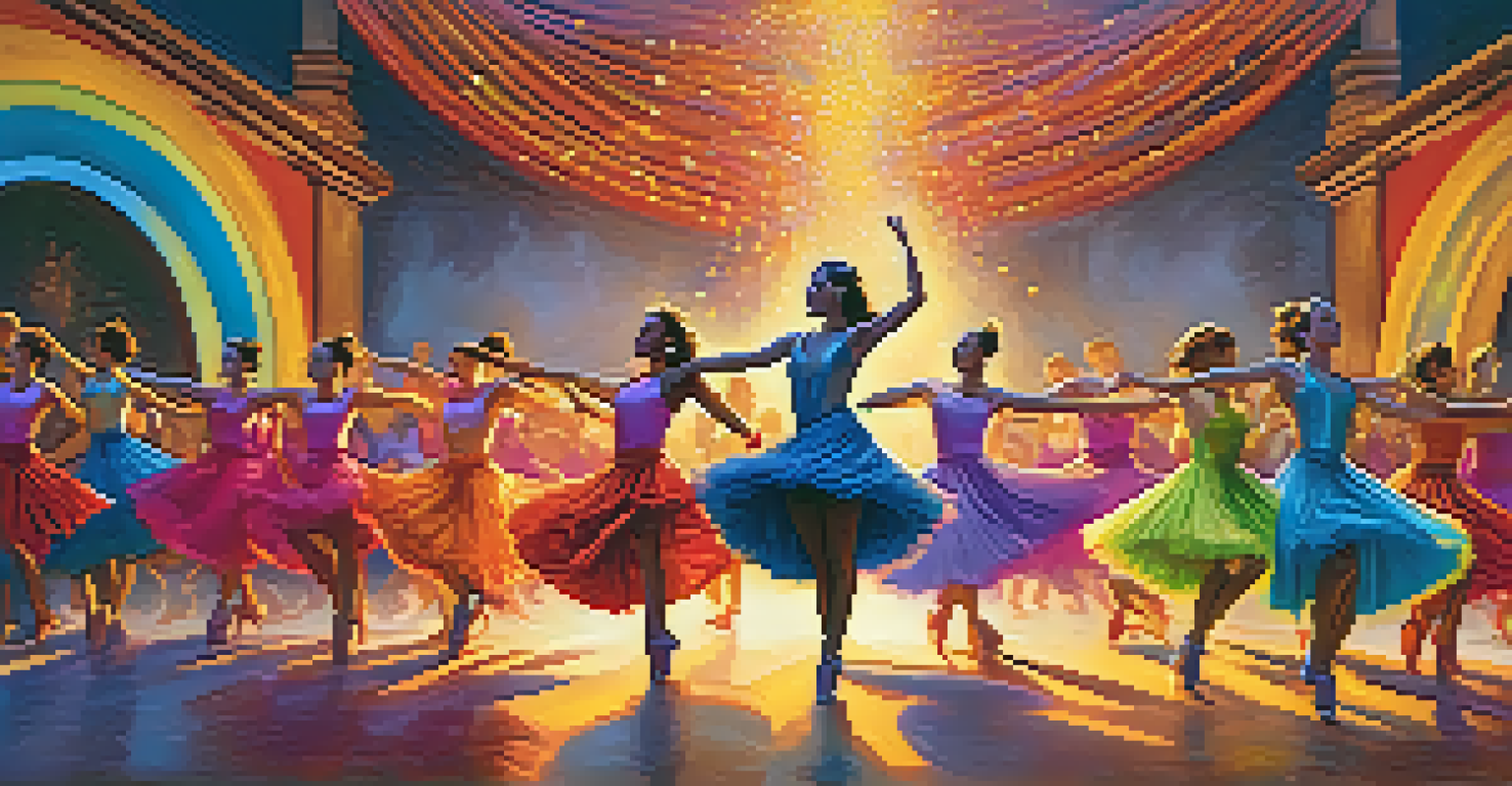Nonverbal Cues in Music: A Study of Gestures and Sounds

What Are Nonverbal Cues in Music?
Nonverbal cues in music refer to the gestures and sounds that convey emotions, intentions, and meanings beyond the notes themselves. These cues can be as simple as a nod from a conductor or the way a performer moves their body while playing. They play a critical role in how music is experienced and understood, adding depth to the auditory experience.
Music is the shorthand of emotion.
For instance, a violinist's swaying might express the emotional weight of a piece, while a conductor's hand movements guide the orchestra and shape the performance. These nonverbal signals can enhance the connection between musicians and their audience, creating a shared experience that transcends words.
Understanding these cues can enrich our appreciation of music, helping us to interpret not just what we hear, but also the emotions and stories being conveyed through movement and sound.
The Role of Gestures in Musical Performance
Gestures in music can range from the subtle to the dramatic, each serving a unique purpose in performance. Whether it's a pianist lifting their hand for emphasis or a singer using hand movements to express lyrics, these actions can amplify the emotional impact of the music. Think of it as a visual language that accompanies the auditory experience.

For example, a conductor's sweeping arm movements can signal the intensity of a crescendo, guiding the orchestra to build excitement. Similarly, a dancer's fluid motions can translate the rhythm of the music into a visual form, creating a holistic experience for the audience.
Nonverbal Cues Enhance Music Experience
Gestures and movements in music provide emotional depth and facilitate communication beyond the notes.
These gestures not only enhance the performance but also help to create a deeper connection between the musicians and the audience, making the experience more engaging and memorable.
How Sounds Contribute to Nonverbal Communication
Sounds in music are not just notes; they are also a form of nonverbal communication. The way a musician plays—whether with force, softness, or speed—can convey a range of emotions and messages. For example, a quick, staccato note might suggest excitement or urgency, while a slow, legato passage could evoke calmness or nostalgia.
The beautiful thing about music is that it transcends language.
These sonic cues are often interpreted intuitively by listeners, who can feel the emotions behind the music even if they can't articulate them. Just like how a sigh can express frustration or relief, the nuances in sound can communicate feelings that words sometimes fail to capture.
By paying attention to these sonic details, listeners can gain a richer understanding of the music, recognizing the layers of meaning that exist beyond the lyrics and melodies.
Interplay Between Gestures and Sounds
The relationship between gestures and sounds in music is a dynamic interplay that enhances the overall experience. When a musician moves in sync with the music, it creates a cohesive performance that resonates with the audience. For instance, a flutist might lean into a high note, visually emphasizing the sound's importance.
This synergy can elevate the emotional intensity of a performance, making it more impactful. Consider a jazz band where the drummer's energetic movements mirror the lively tempo, drawing the audience into the rhythm and energy of the music.
Cultural Variations in Musical Cues
Different cultures use unique nonverbal cues that shape the interpretation and experience of music.
Understanding this interplay helps us appreciate how musicians communicate not only through their instruments but also through their bodies, creating a multi-dimensional experience.
Cultural Variations in Nonverbal Musical Cues
Nonverbal cues in music can vary significantly across cultures, reflecting different traditions and practices. For example, in some cultures, rhythmic clapping or body movements are integral to musical performances, enhancing the communal aspect of music-making. This cultural context can influence how gestures and sounds are interpreted by audiences.
In Western classical music, the conductor's authoritative gestures are essential for coordinating an orchestra, while in African drumming traditions, the dancers' movements may play a central role in storytelling. These variations highlight the diversity of musical expression and its reliance on nonverbal communication.
By exploring these cultural differences, we can gain a broader perspective on how music functions globally, appreciating the unique ways in which gestures and sounds contribute to the art form.
The Science Behind Nonverbal Cues in Music
Research in music psychology has shown that nonverbal cues significantly affect how we perceive and respond to music. Studies indicate that audiences can often detect emotions conveyed through gestures and sounds, even without lyrics. This ability to interpret nonverbal communication highlights the power of music as a universal language.
For example, a 2016 study found that listeners could accurately identify the emotional content of a piece of music by observing the performers' body language. This suggests that nonverbal cues are not just supplementary; they are integral to the musical experience.
Science Validates Nonverbal Communication
Research shows that audiences can often discern emotions in music through performers' gestures and sounds.
Understanding the science behind these cues can deepen our engagement with music, allowing us to appreciate the intricate ways in which musicians communicate and connect with their audiences.
Applying Nonverbal Cues to Music Education
Incorporating nonverbal cues into music education can enhance learning and performance. By teaching students to recognize and utilize gestures, educators can help them develop a stronger stage presence and emotional expression. This approach encourages students to think critically about how they communicate through their music.
For instance, a music teacher might encourage students to explore how different gestures can alter the perception of a piece, prompting them to experiment with their performance style. This not only fosters creativity but also builds confidence in their ability to convey emotions through music.

Ultimately, focusing on nonverbal cues can create well-rounded musicians who not only play their instruments well but also connect with their audiences on a deeper level.